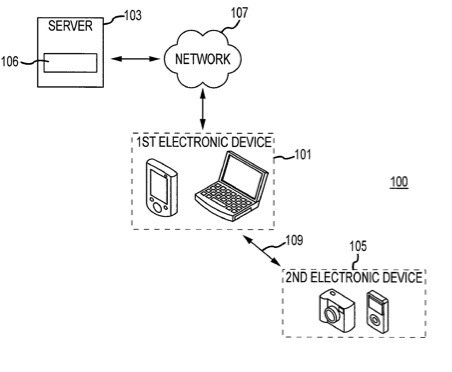According to “AppleInsider” (http://www.appleinsider.com), a patent (number 20120078635) shows that Apple has shown interest in bringing Siri functionality to other devices, like Macs, by pairing them with an iPhone to share its voice control abilities. The describes the current Siri system — which Apple calls a voice activated personal assistant — found on the iPhone 4S, but adds the new element of pairing with a second electronic device to grant it voice control.
Here’s Apple’s background and summary of the invention: “Portable electronic devices, such as digital media players, personal digital assistants, mobile phones, and so on, typically rely on small buttons and screens for user input. Such controls may be built into the device or part of a touch-screen interface, but are typically very small and can be cumbersome to manipulate. An accurate and reliable voice user interface that can execute the functions associated with the controls of a device may greatly enhance the functionality of portable devices.
“However, speech recognition algorithms typically require extensive computational hardware and/or software that may not be practical on a small product. For example, adding the requisite amount of computational power and storage to enable voice recognition on a small device may increase the associated manufacturing costs, as well as add to the bulk and weight of the finished product.
“What is needed is an electronic device that includes a voice user interface for executing voice or oral commands from a user, but where voice recognition is performed by a remote device communicatively coupled to the electronic device, rather than the electronic device itself.
“Embodiments described herein relate to voice control systems. One embodiment may include a first electronic device communicatively coupled to a server and to a second electronic device. The second electronic device may be a portable electronic device, such as a digital media player, that includes a voice user interface. In one embodiment, the first electronic device may be a wireless communication device, such as a cellular or mobile phone.
“In another embodiment, the first electronic device may be a laptop or desktop computer capable of connecting to the server. Voice commands received by the second electronic device may be recorded and transmitted as a recorded voice command file to the first electronic device.
“The first electronic device may then transmit the recorded voice command file to the server, which may run a speech recognition engine that is configured to perform voice recognition on the recorded voice command file to derive a speech recognition algorithm. The server may transmit the algorithm to the first and second electronic devices, thereby enabling them to use the algorithm to independently perform speech recognition.
“One embodiment may take the form of a voice control system that includes a first electronic device communicatively coupled to a server and configured to receive a speech recognition file from the server. The speech recognition file may include a speech recognition algorithm for converting one or more voice commands into text and a database including one or more entries including one or more voice commands and one or more executable commands associated with the one or more voice commands.
“Another embodiment may take the form of a method for creating a database of voice commands on a first electronic device. The method may include transmitting a voice recording file to a server and receiving a first speech recognition file from the server. The first speech recognition file may include a first speech recognition algorithm and a first database including one or more entries comprising one or more voice commands and one or more executable commands corresponding to the one or more voice commands. The method may further include creating a second database including one or more entries from at least one of the one or more entries of the first database of the speech recognition file.
“Another embodiment may take a form of a voice control system that includes a server configured to receive a voice command recording. The server may be configured to process the voice command recording to obtain a speech recognition file including a speech recognition algorithm and a database including one or more voice commands and one or more executable commands corresponding to the one or more voice commands. The server may be further configured to transmit the speech recognition algorithm to a first electronic device communicatively coupled to the server.”
The inventors are Fletcher Rothkopf, Stephen Brian Lynch, Adam Mittleman, and Phil Hobson.

